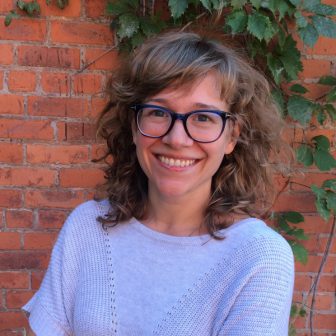Michigan Future Schools, an initiative of Michigan Future, Inc. that Lou, Pat, Kim and I (your regular bloggers here at MFI) all worked on, wound up its direct work with schools in large part by last summer. This year our funders asked us to think about how we could ensure that the things we learned while operating MFS weren’t lost to people still working directly with schools in Detroit. Some of those lessons can be found in presentations on:
- The importance of central offices to transforming education, and
- The extent to which college-readiness is the amalgam of a set of skills and capacities that go far beyond performance on standardized test, skills we are not measuring and mostly not teaching to Detroit high school students
You can download both of those presentations at the bottom of this page.
One of the most fascinating areas where we did a lot of—but not enough—learning was in what we called helping students develop ownership of their own education. Detroit’s high school graduates, should they enroll in college, will face a myriad of challenges that their white, middle class peers do not. That sense of ownership is meant to encompass a complex set of ideas including students’ goals; internal motivation; mindsets (such as belonging); identity and self-image; interests, passions, and purpose, often especially outside of school; and exposure to the wider world.
As a shorthand, we called building student ownership, “turning on their lightbulb.”
One of the strategies we developed for sharing some of what we learned was to organize “book clubs” with other people working in education in Detroit. We based the book club on the handbook my colleague Pat Cooney wrote on building student ownership, which summarizes some of the thinking and strategies educators are using. We played a light facilitation role, supplementing the handbook with a reading list and planning discussion questions to start and focus the conversations. We wanted the book clubs to lead to action, to changes in practice, rather than to sit as fun but empty intellectual exercises. So we planned the meetings such that book club participants would be slowly building a work plan that they could follow to help them incorporate what we were discussing into their work.
You can download the syllabus for the “lightbulb” book club here.
While I could write pages and pages about what people are doing to build student ownership—Pat has already done that and I’ll let that handbook speak for itself. It was a privilege to have deep conversations with smart, reflective, and committed people who are responsible for working as leaders in education and in some cases, directly with Detroit’s young people. I won’t share details about their personal work plans here, exciting as they may be, but I do want to share a few insights from our conversations:
- We are so accustomed to measuring student progress on standardized assessments or against content standards that we can’t imagine measuring student progress in other, more holistic ways. And what we don’t measure, we don’t focus on. Fortunately, we believe that there are effective tools for measuring student ownership. We’d start with attendance and behavior data, and then look at student surveys, teacher reflections and assessment, and skills rubrics to gain even more nuanced understandings.
- There are race and class filters on approaches to student behavior and needs that allow educators in white, affluent communities to create more space for student freedom (necessary for building ownership) while educators in poor, black communities hold more rigid standards around behavior and fear student choice/freedom. Students need to take intellectual risks to learn, and especially as they learn how to be critically thinking adults with ownership over their own paths in life. We have to find ways to allow Detroit’s kids to safely take risks so that they can grow as critical thinkers, not simply as behavior conformists.
- Pre-K and early elementary educators seem to have richer access to tools and strategies that would involve building student ownership into everyday teaching and learning—rather than an extracurricular program. Social-emotional development is still a high priority for teachers of young kids, whereas there seems to be an old assumption that kids should show up for high school “ready” to learn and with many of the skills they need to be successful. At least in Detroit, that just isn’t the case. Project-based learning and career pathways may provide some of the best opportunities now for middle and high schools to incorporate the building of student ownership into the delivery of content.
- Relatedly, many in our book club seemed to agree that the critical year for attacking this challenge is the 9th grade. Students are “trying on” different identities to see where they fit, and helping them land in an identity as a learner becomes harder as they get more settled. There’s also the critical practical fact that students who own their education are poised to do better, especially when it comes to doing the work necessary to get good grades. If a student ends 9th grade with a GPA of 2.0, no matter how well he does in his remaining years of high school, he will struggle to be admitted to a selective admission college with a decent chance of graduating.
- Most of the districts in Detroit, public and charter, lack a plan for developing student ownership. Student ownership may be built by some teachers and some programs, but because of the natural inclinations of that teacher–not because it’s a priority of a district.
Educators and education leaders in Detroit (and probably in many places) have little time to reflect on their practices and make big changes. Yet big changes are needed if we want more and more Detroit students to be prepared for life. We hope to continue to be a part of these conversations that expand our understanding of how to help Detroit’s kids grow the skills they need.







